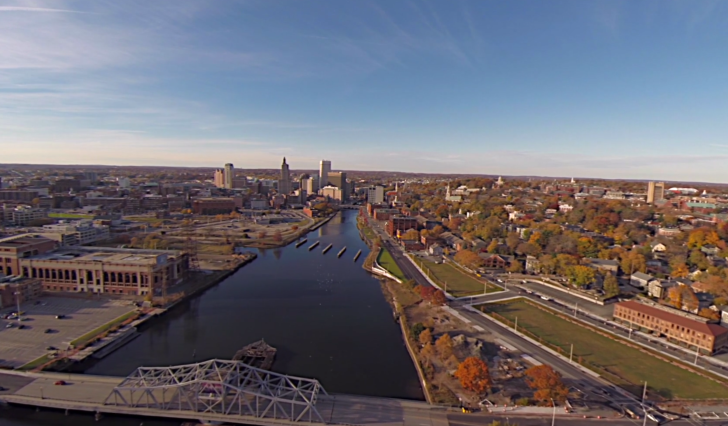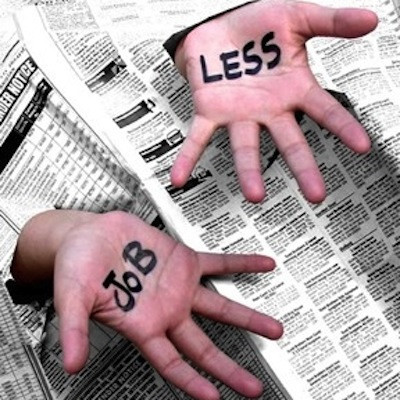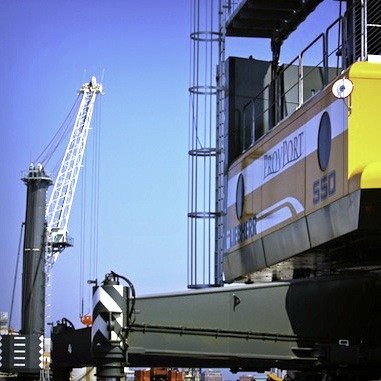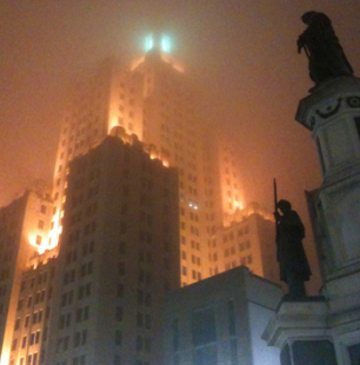Providence One of America’s Most Financially Unequal Cities
Monday, November 24, 2014
The City of Providence is one of the most economically unequal cities in America. A GoLocalProv review of income data developed by The Providence Plan finds that the income difference between the affluent sections of the city are as much as 550% times higher than in the poorest sections of Providence.
An analysis of 300 cities by Bloomberg News earlier this year found that Providence was the 9th most income unequal city in the United States. Seven of the eight cities more unequal are from the South. Providence is now emerging as a tale of two cities. One part of the city is highly educated, very affluent and politically strong. The other Providence is poor, under educated and mostly Hispanic.
GET THE LATEST BREAKING NEWS HERE -- SIGN UP FOR GOLOCAL FREE DAILY EBLAST
"Attacking income inequality requires a multi-pronged approach. We need to put more money in people’s pockets through a reasonable minimum wage and a tax code that asks people to contribute based on their ability to pay,” said Kate Brewster, Executive Director of the RI Economic Progress Institute. “As a state, we can help build a bridge to the middle class for more Rhode Islanders by helping low-wage workers pay for child care and health care until they can afford it on their own; and we need to raise adequate resources to invest in economic opportunity for everyone – which means quality, affordable education for our youngest residents to our oldest workers and everyone in between. If we can find the will to lift up the education and skills of our workers’ in a meaningful way, we will have a chance at growing better paying jobs in the Ocean State,” said Brewster.
Much was made of the outcome of the Providence Mayor’s race, where Mayor-elect Jorge Elorza lost most of the lower income wards in the city, but racked up big numbers in the affluent East Side.
Both politically and economically, Providence is one of the most divided cities in America. Mayor-elect Elorza is presently in the midst of a “listening” strategy visiting different sections of the city to get input on how to create “One Providence.”
"There is a lack of income in the middle and lower-middle quintiles. The people in the income scale that spend the most money have the least and that makes it difficult for retail to thrive here," said policy analyst Tom Sgouros. "Our focus should be on raising wages at the lower levels, and there are a lot of policies we can pursue: raise the minimum wage, establish and enforce living wage policies for government purchasing, crack down on wage theft and job misclassification (i.e. pretending that employees are contractors), raise the salary threshold for mandatory overtime, and so on."
Rich and Poor
One census track on the East Side of Providence in the Blackstone Boulevard section of the city along the Seekonk River, reports a median family income of $170,625. In contrast, median household income in many sections of the city are 80% lower. Moreover, for Hispanics' median household income for the entire city is just $27,000.
“We know that we have a depressed economy, and with that you'll see greater income inequalities," said Mike Stenhouse with the RI Center for Freedom and Prosperity, of Providence's ranking. "The middle class will disappear. It's consistent with what we know. The big mistake we keep making is more taxes, more welfare, more handouts. So the question is what do you want, a welfare check or a paycheck? If you want to have a robust economy, we'll have to put a little more faith that people can find work to improve their status."
The Bloomberg analysis looked at income by quintiles and applied the Gini coefficient, which is calculated by the Census from household income share by quintiles, to measure distribution of wealth. It ranges from zero, which reflects absolute equality, to one, complete inequality. Bloomberg also found that just under 29% of Providence residence live in poverty.
A long way from One Providence
“Is a One Providence feasible? It's not feasible if we can't get that income disparity closed. So many of our children live in poverty. I'm willing to have workshops, to have those discussions. How do we help the people in poverty get out of poverty?” said Providence City Councilman Kevin Jackson (Ward 3-D). “A lot of people don't want to have that conversation though because we know that we've failed. But I'm willing to do that. Those are the people don't have a voice, but that need one."
For Stenhouse, he sees the political fallout an outcome of one party rule.
“Who is really looking out for the poor? Is it the party that wants to keep them dependent on government with little opportunity to rise? Or is it someone who wants to free up the burdens we have, allow for educational opportunities, and provide people with the chance to rise up the income ladder?” asked Stenhouse.
Related Slideshow: 5 Ways Taveras Could Have Grown Jobs in Providence
During Angel Taveras' tenure as Mayor of Providence, the unemployment rate ballooned. According, to US Department of Labor statistics, Providence hit a 12.5% unemployment level in the spring on 2014.
Hispanic unemployment is among the worst in the United States. GoLocal looked at tangible, revenue neutral ways Taveras' Administration could have grown jobs.
Related Articles
- Aerial Drones Capture Scenic Views of Providence + RI
- Johnston, North Providence Firefighters To Square Off in Football Game
- URI Providence: Nine Degrees for the Working Adult
- NEW: Alex and Ani Lands Naming Rights to The Providence Rink
- Riley: Post Election, Lots of Work to Be Done in Providence
- Water Ways Exhibit Now Open at Providence Children’s Museum
- Will Providence City Council See Fallout Over Ward 3 Battle?
- Sky Chiefs Basketball Clinic in South Providence
- Russ Moore: Providence Should Enact Electoral College
- Warwick Police and The Providence Center Team Up for Public Safety
- Greatest Places in Providence to Watch Football
- Providence College Basketball Season Preview
- Providence to Lose Millions as 50+ College Properties Go Off Tax Rolls
- Providence Loses Millions More in Tax Revenue - See the Properties
- Providence Rink Renamed The Alex and Ani Community Center
- Providence Bus Tunnel Flooded, Water Main Break
- Providence City Council Members Question Dormitory Deal on 195 Land
- NEW: Providence’s Brunzos Declared Minecraft Hunger Games World Champion
- First Providence Consultant Hired at Start-Up EverPresent
- NEW: Providence to Host 2016 NCAA Basketball Tournament Games
- Mayor-elect Elorza Announces ‘One Providence’ Listening Forums
- Providence North End 49ers Eyeing National Title Game
- NEW: RI State Police, Providence Police to Hold Community Forum Monday on Ferguson
- Elorza Refuses to Disclose Terms of Leave from Roger Williams University
- The Scoop: Elorza Requests Investigation Into Possible Ballot Tampering, Fung Tours Brutopia
- NEW: Anti-Elorza PAC Filed with RI Board of Elections
- Elorza Supporter Rep. Slater Caught with Mail Ballot
- UPDATED: Brown Polls Show Raimondo and Elorza Leading
- 10 Factors that Will Decide if Elorza or Cianci is the Next Mayor of Providence
- Michael Riley: Projo, Elorza and Cianci are all Blind to Reality
- RI GOP Official Talan Endorses Elorza for Mayor; Harrop Responds
- NEW: Bishop Tobin Questions If Elorza is an Atheist
- NEW: Cianci’s Lawyer Files Elections Complaint Over Elorza, York, and Others
- Cianci Polling Shows 14+ Point Lead Over Elorza
- Elorza Unveils Economic Plan
- NEW: Elorza Announces Transition Team
- 10 Questions Elorza Has to Answer as Mayor
- NEW: Council President-Elect Aponte Learns of Elorza Transition Team from GoLocal
- Will Esserman Return to Head Public Safety Under Elorza?
- Next Steps for Mayor-Elect Elorza in Providence
- Buddy Cianci Returns to Radio - Will Elorza be His First Guest?
- The Scoop: Smith Blasts Paiva-Weed on False Allegations, Elorza Questions Cianci’s Apology, and More
- NEW: GOP Candidate Harrop Says He Will Vote For Democrat Elorza
- GoLocal’s Kate Nagle Tracks Down Jorge Elorza
- Elorza Beats Cianci in Providence Mayoral Race
- Battle Lines Being Drawn Between Labor and Elorza
















